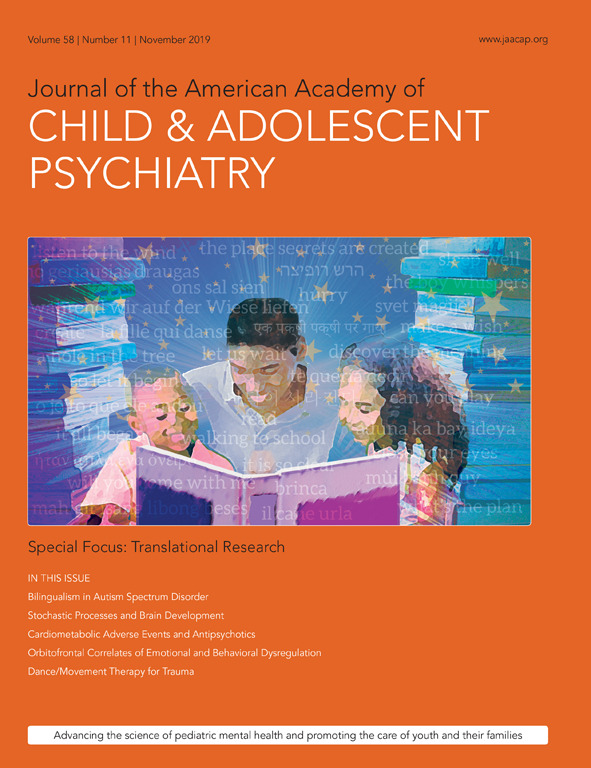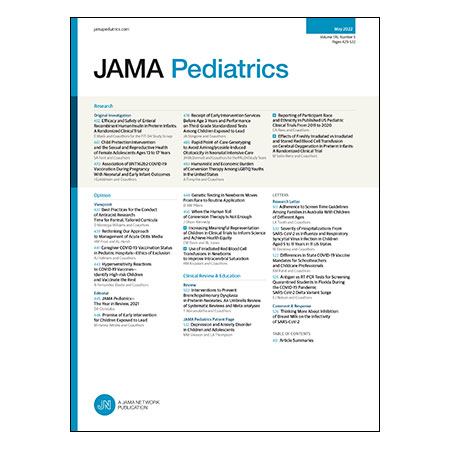31
Jun 6, 2023
It has long been recognized that children with ADHD do not display the same level of functional difficulty when engaging with technology. This thoughtful editorial explores the potential benefits of ADHD in the digital world and suggests we may need to reconceptualize our understanding of this common form of neurodivergence.
Sonuga‐Barke, E., & Kostyrka‐Allchorne, K. (2022). Editorial Perspective: Attention‐deficit/hyperactivity disorder viewed as neuro‐divergence in the dig...
32
Jun 6, 2023
Teaching children with ADHD self-regulation skills may improve parental perceptions of ADHD symptoms, but does not lead to teachers seeing children as any different.
Mah, J. W., Gill, H., & Doherty, M. (2023). Feasibility and Efficacy of the Alert Program® for children with attention-deficit/hyperactivity disorder. Clinical child psychology and psychiatry, 13591045231162680.
https://journals.sagepub.com/doi/abs/10.1177/13591045231162680
33
Jun 6, 2023
For mothers who have grown up without mothers, raising a child may entail addressing their own identities, mourning prior losses and breaking intergenerational cycles.
Walsh, A., Tiernan, B., Thompson, B., McCormack, D., & Adair, P. (2023). ‘Nobody taught her how to be a mother’: The lived experience of mothering without a mother. Infant Mental Health Journal.
https://onlinelibrary.wiley.com/doi/full/10.1002/imhj.22059?campaign=wolearlyview
34
Jun 6, 2023
The subjective experience of childhood adversity is probably more relevant to the likelihood of mental health problems than objective measures of adversity. As such, it is possible that interventions targeting memory and cognitive processs related to adversity may reduce future problems.
Francis, E. R., Tsaligopoulou, A., Stock, S. E., Pingault, J. B., & Baldwin, J. R. (2023). Subjective and objective experiences of childhood adversity: a meta‐analysis of their agreement and relationshi...
35
Jun 6, 2023
This updated Practice Parameter from the American Academy of Child and Adolescent Psychiatry identifies supportive measures as first line for mild forms of depression, followed by psychotherapy and then medication for increasingly more severe forms of the condition.
Walter, H. J., Abright, A. R., Bukstein, O. G., Diamond, J., Keable, H., Ripperger-Suhler, J., & Rockhill, C. (2023). Clinical practice guideline for the assessment and treatment of children and adolescents with major and pers...
36
Jun 6, 2023
As rates of children and young people with anxiety and depression increase worldwide, there continue to be limits on access to psychotherapy and concerns about overuse of anti-anxiolytic and antidepressant medication. As such, it is useful to see the results of this study showing that addressing sleep with a relatively safe medication such as melatonin can reduce rates of self-harm in young people with and without established mental health problems. It may not be the whole solution, ...
37
Jun 6, 2023
Based on the 5-item Sick Control One Fat Food (SCOFF) questionnaire results, this systematic review of 32 studies and 63,181 participants from 16 countries found that 22% of children and young people reported experiencing disordered eating. Rates were higher among girls (30%) than boys (17%). Despite lower established prevalence of anorexia and bulima, these results suggest a much broader spectrum of eating problems than previously recognized among this age group.
López-Gil, J. F...
38
Jun 6, 2023
Parenting a gender diverse young person can be stressful and support can increase knowledge and reduce isolation. However, as this study found, group-based family support may be difficult due to competing parent demands.
Lehmann, K., & Leavey, G. (2023). Systematic review: psychological/psychosocial interventions for the families of gender diverse youth under 18 years old. Clinical child psychology and psychiatry, 13591045231169093.
https://journals.sagepub.com/doi/abs/10.1177/13...
39
Jun 6, 2023
Based on data from the Northern Ireland Registry of Self-Harm, around 0.8% of young people presenting to hospital following self-harm ended up dying by suicide and 23% of those who died by suicide had presented to hospital following self-harm. Important data to highlight known difficulties with risk prediction, yet confirm the opportunities for suicide prevention in hospital settings.
Ross, E., O'Reilly, D., O'Hagan, D., & Maguire, A. (2023). Mortality risk following self‐harm in youn...
40
Jun 6, 2023
Given that stressful life events are the most common precipitant of relapse following first-episode psychosis, should the development of stress management skills be more of a therapeutic priority than is currently the case? Findings from this review would suggest so.
Bhattacharyya, S., Schoeler, T., Di Forti, M., Murray, R., Cullen, A. E., & Colizzi, M. (2023). Stressful life events and relapse of psychosis: analysis of causal association in a 2-year prospective observational cohort...







